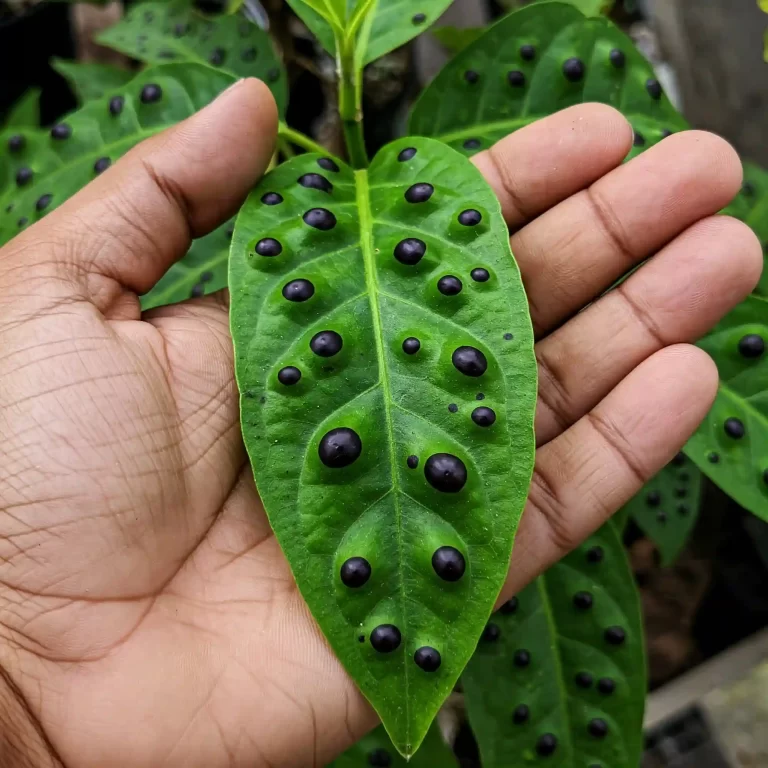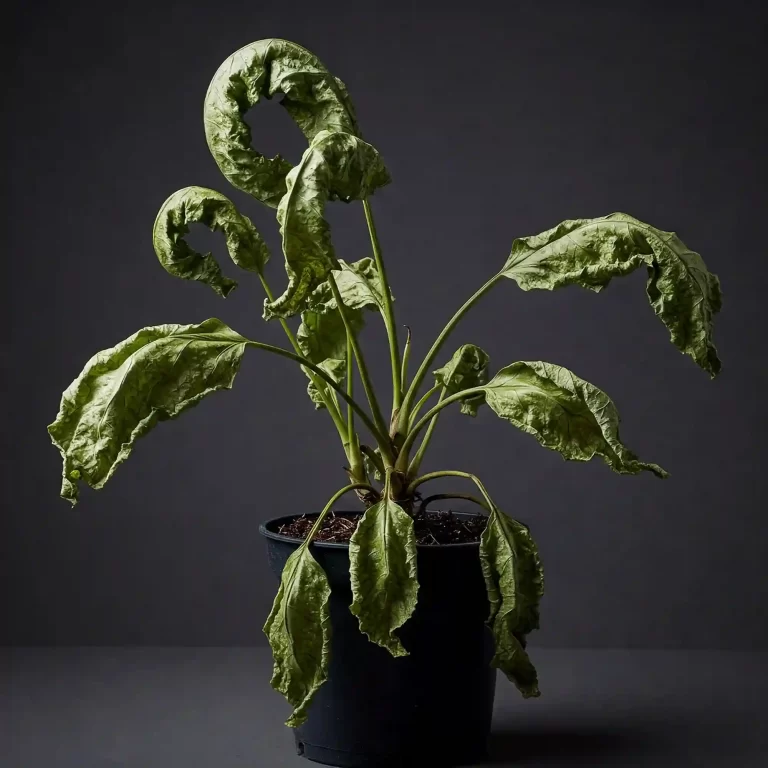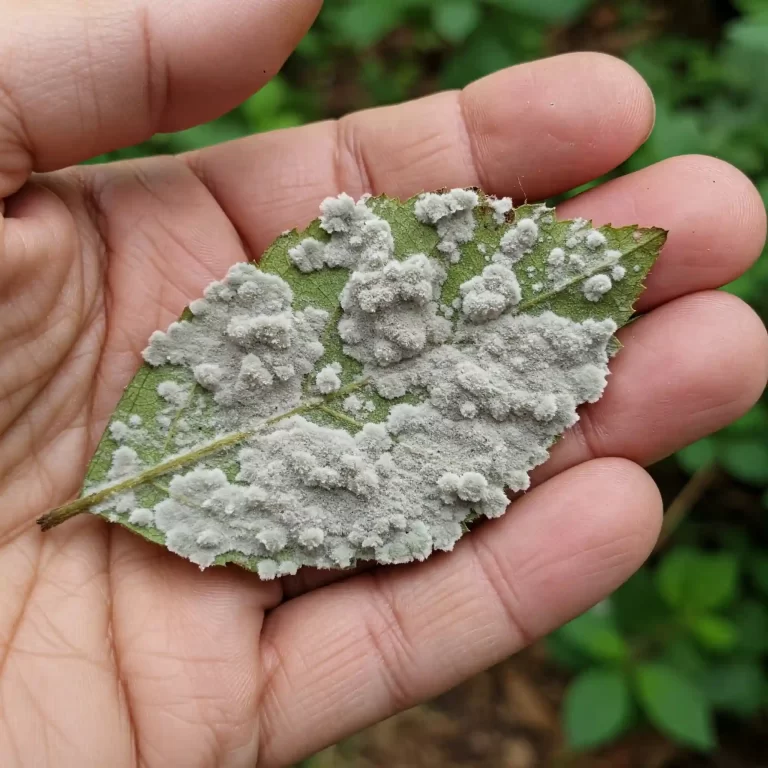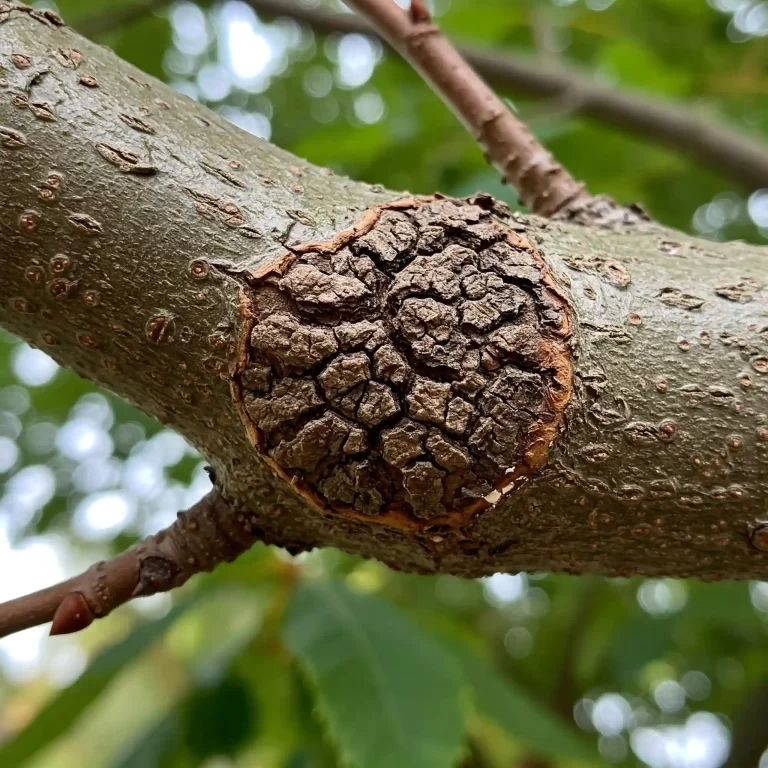The cereal leaf beetle is a persistent pest that can wreak havoc on your garden, particularly if you grow small grains like wheat, oats, and barley. These beetles are notorious for their ability to damage crops, leading to significant yield losses and economic impact.
Imagine spending months nurturing your garden, only to find your plants’ leaves riddled with holes and your crops stunted. The frustration of seeing your hard work undone by these tiny pests can be overwhelming. The damage caused by cereal leaf beetles not only affects the health of your plants but also your overall gardening success.
Fortunately, with the right knowledge and strategies, you can effectively manage and control cereal leaf beetle infestations. This comprehensive guide will provide you with all the information you need to identify, prevent, and control these pests, ensuring a healthy and thriving garden.
What is the Cereal Leaf Beetle?
Identification
The cereal leaf beetle, scientifically known as Oulema melanopus, is a small but destructive pest that primarily targets small grains and grasses. These beetles are easily recognizable by their distinctive appearance. Adult cereal leaf beetles are about 5 mm long, with a shiny, dark-blue body and reddish-brown legs and antennae. The larvae, which are the most damaging stage, are yellowish with a slimy black coating of fecal material that they use as a defense mechanism.
Identifying cereal leaf beetles in your garden is crucial for early intervention. Here are some key characteristics to look for:
- Adults: Dark-blue wing covers, reddish-brown legs, and antennae.
- Larvae: Yellowish body covered in black fecal material.
- Eggs: Bright yellow, laid in rows on the undersides of leaves.
Lifecycle
Understanding the lifecycle of the cereal leaf beetle is essential for effective management. The lifecycle consists of four stages: egg, larva, pupa, and adult. Each stage has specific characteristics and behaviors that impact how you should approach control measures.
- Egg Stage: Female beetles lay their eggs on the undersides of leaves in the spring. The eggs are bright yellow and are laid in rows. They hatch in about 7-10 days, depending on temperature.
- Larval Stage: The larvae emerge and begin feeding on the leaves, causing the most significant damage. They feed for about 2-3 weeks before dropping to the ground to pupate.
- Pupal Stage: The larvae pupate in the soil, where they remain for about 2-3 weeks before emerging as adults.
- Adult Stage: Adult beetles emerge from the soil and begin feeding on the leaves. They overwinter in protected areas and become active again in the spring.
The lifecycle of the cereal leaf beetle is closely tied to temperature and environmental conditions. Understanding these factors can help you predict and manage infestations more effectively.
Impact of Cereal Leaf Beetle on Crops
Affected Plants
The cereal leaf beetle primarily targets small grains and grasses. Here are some of the most commonly affected plants:
- Wheat: One of the most susceptible crops, with significant yield losses reported in infested fields.
- Oats: Another common target, with larvae feeding on the leaves and reducing photosynthetic capacity.
- Barley: Similar to wheat and oats, barley is also highly susceptible to cereal leaf beetle damage.
- Other Grasses: Various grasses, including rye and triticale, can also be affected by cereal leaf beetles.
Damage Caused
The damage caused by cereal leaf beetles can be severe, leading to significant yield losses and economic impact. The larvae are the most destructive stage, feeding on the leaves and creating long, narrow strips of damage. This feeding behavior reduces the plant’s ability to photosynthesize, leading to stunted growth and reduced yields.
Here are some key points about the damage caused by cereal leaf beetles:
- Leaf Damage: Larvae feed on the upper surface of the leaves, leaving behind long, narrow strips of damage. This feeding behavior reduces the plant’s ability to photosynthesize, leading to stunted growth and reduced yields.
- Economic Impact: Infestations can lead to significant yield losses, with some fields experiencing up to 50% reduction in yield. The economic impact can be substantial, particularly for commercial growers.
- Secondary Effects: In addition to direct damage, cereal leaf beetle infestations can also lead to secondary effects, such as increased susceptibility to diseases and other pests.
Understanding the impact of cereal leaf beetles on your crops is essential for developing effective management strategies. By recognizing the signs of damage and taking early action, you can minimize the impact on your garden.
How to Identify Cereal Leaf Beetle Infestations
Signs of Infestation
Identifying cereal leaf beetle infestations early is crucial for effective management. Here are some signs to look for:
- Leaf Damage: Look for long, narrow strips of damage on the upper surface of the leaves. This is a characteristic sign of larval feeding.
- Presence of Larvae: Check the undersides of leaves for yellowish larvae covered in black fecal material.
- Presence of Adults: Look for dark-blue adult beetles with reddish-brown legs and antennae.
- Eggs: Check the undersides of leaves for bright yellow eggs laid in rows.
Regular monitoring and field scouting are essential for early detection of cereal leaf beetle infestations. By identifying the signs of infestation early, you can take action before the damage becomes severe.
Differentiating from Other Pests
Cereal leaf beetles can be easily confused with other pests, so it’s important to know how to differentiate them. Here are some tips for distinguishing cereal leaf beetles from similar pests:
- Appearance: Cereal leaf beetles have a distinctive dark-blue body with reddish-brown legs and antennae. Other pests may have different colors or markings.
- Feeding Behavior: Cereal leaf beetle larvae feed on the upper surface of the leaves, creating long, narrow strips of damage. Other pests may have different feeding patterns.
- Lifecycle: Understanding the lifecycle of the cereal leaf beetle can help you differentiate it from other pests. For example, the larvae of cereal leaf beetles are yellowish with a black coating of fecal material, while other pests may have different larval stages.
By knowing how to identify cereal leaf beetles and differentiate them from other pests, you can take targeted action to manage infestations effectively.
Control Methods for Cereal Leaf Beetle
Integrated Pest Management (IPM)
Integrated Pest Management (IPM) is a comprehensive approach to pest control that combines multiple strategies to manage pests effectively. Here are the key steps to implement IPM for cereal leaf beetle:
- Monitoring: Regularly monitor your garden for signs of cereal leaf beetle infestations. Use field scouting and threshold levels to determine when action is needed.
- Biological Control: Introduce natural predators and parasitoid wasps to control cereal leaf beetle populations. These biological control agents can help reduce the need for chemical insecticides.
- Chemical Control: Use insecticides as a last resort when other control methods are not effective. Follow application guidelines and safety precautions to minimize environmental impact.
- Cultural Control: Implement cultural practices such as crop rotation and timing of planting and harvesting to reduce cereal leaf beetle infestations.
By combining these strategies, you can effectively manage cereal leaf beetle infestations and minimize the impact on your garden.
Chemical Control
Chemical control involves the use of insecticides to manage cereal leaf beetle infestations. Here are some recommended insecticides and application guidelines:
- Insecticides: Use insecticides that are specifically labeled for cereal leaf beetle control. Some common options include pyrethroids, organophosphates, and neonicotinoids.
- Application Guidelines: Follow the label instructions for application rates and timing. Apply insecticides when the larvae are actively feeding to maximize effectiveness.
- Safety Precautions: Use personal protective equipment (PPE) and follow safety guidelines to minimize exposure to insecticides. Be mindful of environmental impact and avoid spraying near water sources.
Chemical control should be used as a last resort when other control methods are not effective. By following these guidelines, you can use insecticides safely and effectively to manage cereal leaf beetle infestations.
Biological Control
Biological control involves the use of natural predators and parasitoid wasps to manage cereal leaf beetle populations. Here are some key points about biological control:
- Natural Predators: Introduce natural predators such as lady beetles, lacewings, and ground beetles to control cereal leaf beetle populations. These predators feed on the larvae and help reduce their numbers.
- Parasitoid Wasps: Use parasitoid wasps such as Tetrastichus julis to control cereal leaf beetle larvae. These wasps lay their eggs inside the larvae, which eventually kill the host.
- Benefits and Limitations: Biological control is environmentally friendly and can provide long-term control of cereal leaf beetle populations. However, it may take time for natural predators and parasitoid wasps to establish and become effective.
By incorporating biological control into your pest management strategy, you can reduce the need for chemical insecticides and promote a healthy garden ecosystem.
Cultural Control
Cultural control involves the use of cultural practices to reduce cereal leaf beetle infestations. Here are some key practices to consider:
- Crop Rotation: Rotate crops to disrupt the lifecycle of cereal leaf beetles. Avoid planting the same crop in the same location year after year.
- Timing of Planting and Harvesting: Adjust planting and harvesting times to avoid peak cereal leaf beetle activity. Early planting can help crops establish before beetle populations peak.
- Sanitation: Remove crop residues and weeds that can harbor cereal leaf beetles. Clean up debris in and around the garden to reduce overwintering sites.
- Trap Crops: Plant trap crops to attract cereal leaf beetles away from your main crops. Once the beetles are concentrated on the trap crops, they can be treated or removed.
Implementing these cultural practices can help reduce cereal leaf beetle infestations and promote a healthier garden environment.
Preventing Cereal Leaf Beetle Infestations
Best Practices for Prevention
Preventing cereal leaf beetle infestations is key to maintaining a healthy garden. Here are some best practices to consider:
- Regular Monitoring: Regularly inspect your garden for signs of cereal leaf beetle activity. Early detection is crucial for effective management.
- Healthy Soil: Maintain healthy soil through proper fertilization and organic matter addition. Healthy plants are more resilient to pest attacks.
- Diverse Planting: Plant a diverse range of crops to reduce the risk of cereal leaf beetle infestations. Crop diversity can disrupt the beetle’s lifecycle and reduce population buildup.
- Water Management: Proper irrigation practices can help maintain plant health and reduce stress, making plants less susceptible to pest damage.
By following these best practices, you can create an environment that is less conducive to cereal leaf beetle infestations.
Resistant Varieties
Using plant varieties that are resistant to cereal leaf beetles can be an effective prevention strategy. Here are some points to consider:
- Resistant Wheat Varieties: Some wheat varieties have been bred for resistance to cereal leaf beetles. These varieties can reduce the impact of infestations and improve yields.
- Barley and Oats: Research is ongoing to develop resistant varieties of barley and oats. Check with local agricultural extension services for recommendations on resistant varieties.
- Benefits of Resistant Varieties: Resistant varieties can reduce the need for chemical control and provide a more sustainable approach to pest management.
Incorporating resistant varieties into your planting strategy can help prevent cereal leaf beetle infestations and promote a healthier garden.
Research and Studies on Cereal Leaf Beetle
Latest Research Findings
Recent research has provided valuable insights into the biology and management of cereal leaf beetles. Here are some key findings:
- Biological Control: Studies have shown that parasitoid wasps, such as Tetrastichus julis, are effective in controlling cereal leaf beetle populations. These wasps lay their eggs inside the beetle larvae, which eventually kill the host.
- Chemical Control: Research has identified several insecticides that are effective against cereal leaf beetles. However, the use of insecticides should be balanced with environmental considerations and the potential for resistance development.
- Cultural Practices: Research has highlighted the importance of cultural practices, such as crop rotation and timing of planting, in reducing cereal leaf beetle infestations.
These findings provide valuable information for developing effective management strategies for cereal leaf beetles.
Ongoing Research
Ongoing research continues to explore new methods for managing cereal leaf beetles. Here are some areas of focus:
- Genetic Resistance: Researchers are working to develop new plant varieties with enhanced resistance to cereal leaf beetles. This includes both traditional breeding methods and genetic engineering.
- Integrated Pest Management: Studies are exploring new ways to integrate biological, chemical, and cultural control methods into comprehensive IPM programs.
- Climate Impact: Research is examining how climate change may affect cereal leaf beetle populations and their impact on crops. Understanding these effects can help develop adaptive management strategies.
Staying informed about ongoing research can help you stay ahead of cereal leaf beetle infestations and implement the latest management practices.
FAQs about Cereal Leaf Beetle
Common Questions
Here are some frequently asked questions about cereal leaf beetles and their management:
- What are the signs of a cereal leaf beetle infestation?
- Look for long, narrow strips of damage on the upper surface of leaves, yellowish larvae covered in black fecal material, and dark-blue adult beetles with reddish-brown legs and antennae.
- How can I control cereal leaf beetles in my garden?
- Use a combination of monitoring, biological control, chemical control, and cultural practices to manage cereal leaf beetle infestations effectively.
- Are there any resistant plant varieties available?
- Yes, some wheat varieties have been bred for resistance to cereal leaf beetles. Research is ongoing to develop resistant varieties of barley and oats.
- What is Integrated Pest Management (IPM)?
- IPM is a comprehensive approach to pest control that combines multiple strategies, including monitoring, biological control, chemical control, and cultural practices, to manage pests effectively.
- How does climate change affect cereal leaf beetles?
- Climate change can impact cereal leaf beetle populations and their impact on crops. Research is ongoing to understand these effects and develop adaptive management strategies.
These FAQs provide practical information and tips for managing cereal leaf beetle infestations in your garden.
Conclusion
Managing cereal leaf beetle infestations is crucial for maintaining a healthy and productive garden. By understanding the lifecycle and behavior of these pests, you can implement effective control measures and prevent infestations. Regular monitoring, the use of resistant varieties, and the integration of biological, chemical, and cultural control methods are key to successful management.
Remember, early detection and intervention are essential for minimizing the impact of cereal leaf beetles on your crops. Stay informed about the latest research and best practices to keep your garden thriving.
Additional Resources
For more information on cereal leaf beetle management, check out these resources:
Contact your local agricultural extension services for personalized advice and recommendations on managing cereal leaf beetle infestations in your area.




